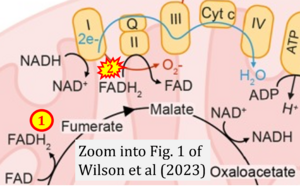Wilson 2023 Trends Cell Biol
| Wilson N, Kataura T, Korsgen ME, Sun C, Sarkar S, Korolchuk VI (2023) The autophagy-NAD axis in longevity and disease. Trends Cell Biol 33:788-802. https://doi.org/10.1016/j.tcb.2023.02.004 |
Wilson N, Kataura T, Korsgen ME, Sun C, Sarkar S, Korolchuk VI (2023) Trends Cell Biol
Abstract: Autophagy is an intracellular degradation pathway that recycles subcellular components to maintain metabolic homeostasis. NAD is an essential metabolite that participates in energy metabolism and serves as a substrate for a series of NAD+-consuming enzymes (NADases), including PARPs and SIRTs. Declining levels of autophagic activity and NAD represent features of cellular ageing, and consequently enhancing either significantly extends health/lifespan in animals and normalises metabolic activity in cells. Mechanistically, it has been shown that NADases can directly regulate autophagy and mitochondrial quality control. Conversely, autophagy has been shown to preserve NAD levels by modulating cellular stress. In this review we highlight the mechanisms underlying this bidirectional relationship between NAD and autophagy, and the potential therapeutic targets it provides for combatting age-related disease and promoting longevity.
• Bioblast editor: Gnaiger E
Correction: FADH2 and Complex II
- FADH2 is shown as the substrate feeding electrons into Complex II (CII). This is wrong and requires correction - for details see Gnaiger (2024).
- Gnaiger E (2024) Complex II ambiguities ― FADH2 in the electron transfer system. J Biol Chem 300:105470. https://doi.org/10.1016/j.jbc.2023.105470 - »Bioblast link«


